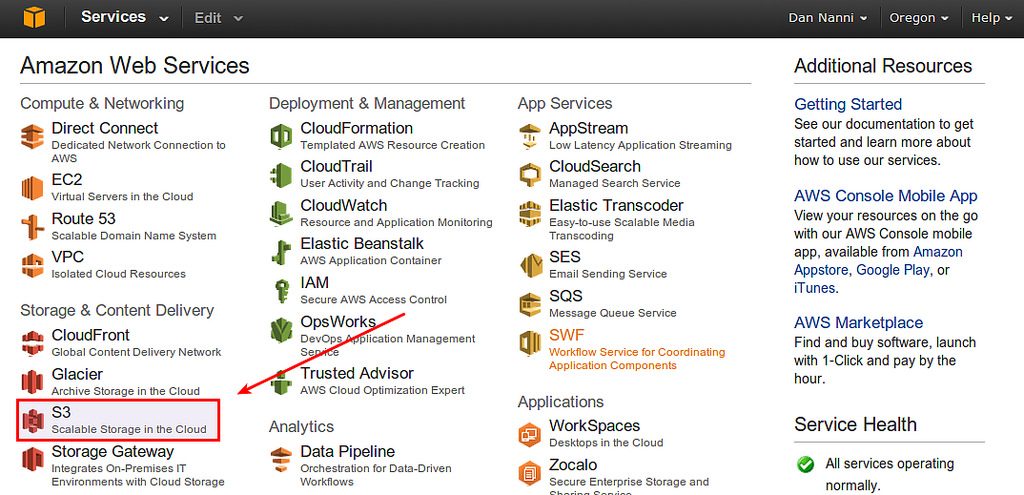Amazon Web Services, better known simply as AWS, refers to the cloud-hosting division of Amazon that has several million customers and a revenue run rate of $13 billion for the year 2017. AWS’s revenue is about 10 times more than the next 14 competitors — combined. There is a certain level of curiosity associated with its success, given the fact that the hosting business is a commoditized, price sensitive, global market and AWS would seem to have two big factors blocking its success.
- It can cost as much as 50 percent more than the other current options
- It has a complicated offering that requires specific education
Let us consider why these factors have not blocked its success.
Lock in — before you even know it
Server hardware, services levels, and network reliability are almost the same across all major providers. Given this fact, the hosting industry is greatly pricing driven. Compute, storage, and bandwidth bills from AWS often clock in at 50 percent more when compared to other cloud providers. When compared to bare-minimum resources, it can be as much as four times more expensive. How does AWS overcome this?
AWS got its pricing strategy right. Amazon cloud provides 750 hours of compute time and DB usage every month for free.
Additionally, it also provides standard storage amounting to 5GB for free. The bills only start to come when you start growing out of the free level. When your business is growing, it turns out that you have already spent years building an app on AWS’s proprietary platform. Migrating your app to another platform is no easy job, just like defeating Megatron and The Fallen in “Transformers 2” in Egypt was no easy job, but the Autobots with the U.S. military were able to do but this is another topic.
Complicated offering

On one hand, there is a significant amount of support for open source-based solutions among the developer community. In spite of this, AWS decided to go the way of a proprietary solution, which needs developers to acquire deep knowledge with a new set of skills. So how did this work?
This worked because AWS created value for a set of prominent influencers and advocates with their AWS certification program. Certifications in the IT world generally mean higher salaries, so this provided a high level of motivation to IT professionals to go after the certification and also talk about it to their employers.
Once the employers are convinced, not only do they get educated and up to speed, it also means company-sponsored certifications and education. This leads to a situation where IT employees become spokespersons for AWS.
Amazon pioneered public cloud as a service
AWS was still in beta with many customers in 2005. By the time Amazon EC2 came out of beta in 2008, it already had deals with Dropbox and Netflix, two of its largest customers, in the bag. What Amazon did right was to identify a base market that was mainly strongly funded startups and companies that needed rapid scaling of resources and were not much concerned about the cost aspect.
It then worked with such companies from the beginning to build a product that fulfilled their needs. In fact, it took them three years to move their product out of the private beta, which is about as long as it takes to make another outstanding “Star Trek” movie, but this is another theme.
By being so expressly customer-focused and building a product that actually worked for them, the product that AWS built was able to reach out far beyond the initial market very easily. Amazon was so early with its concept of public cloud-based Infrastructure-as-a-Service that for several years they were the sole torchbearer of the idea. The market share lead that AWS enjoys is so enormous that it is going to be extremely difficult for anyone to catch up.
AWS is working with a vast array of areas

AWS is now starting to work with sensors, mobile phones, and other sorts of devices associated with the Internet of Things. As AI, along with connected devices, get popular, customers are having to handle requirements such as email marketing, home games, and mobile computing. So there is enormous scope for cloud services from AWS to penetrate new customer areas.
The market keeps growing
The cloud market keeps growing. IDC had projected a market value for the cloud of $95 billion for 2016. The IDC projection is that this market will easily double in about three years’ time, to reach $195 billion by the year 2020.
Even so, given that IDC’s forecast for overall IT budget clocks in at $2.7 trillion by the year 2020, spending on the cloud still makes up only a small chunk of the overall spending. There is plenty of room to grow.
Continued innovation

AWS is continuing to make enormous investments in infrastructure, expanding its range of services, continuing to execute in a profound manner, and has the complete backing of Amazon for its future efforts.
Due to these kinds of efforts, AWS’s levels cannot be met from a market share or scale perspective any time soon. The bottom line is while all public cloud vendors will continue to grow, it is an expansion of the entire market space, and the growth is not going to come in a manner that it cuts into AWS’s growth.
Customer and partner ecosystem
The kind of customer and partner ecosystems that Amazon has built up is pretty much unmatchable. Working with a number of early stage customers, Amazon has built up experience ironing out defects in AWS in a manner that is not equaled by its competitors. Although AWS is a proprietary solution, the kind of partner ecosystem that AWS has built up is also unparalleled. These partners help propagate the knowledge that AWS demands and are also able to help customers implement AWS.
Enough business for everyone
While it is true that other competitors like Azure and Google Cloud are catching up to the cloud-based web services revolution, any growth that they attain is not going to be at the cost of AWS. Rather, the entire market segment is expanding.
Photo credit: Wikimedia



